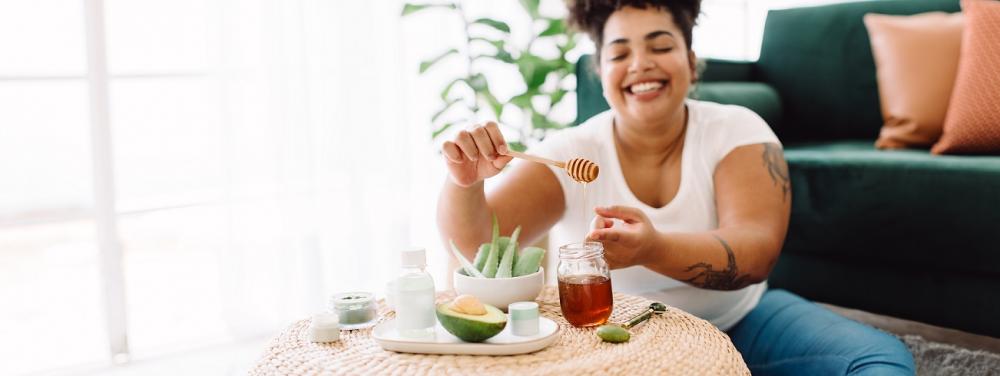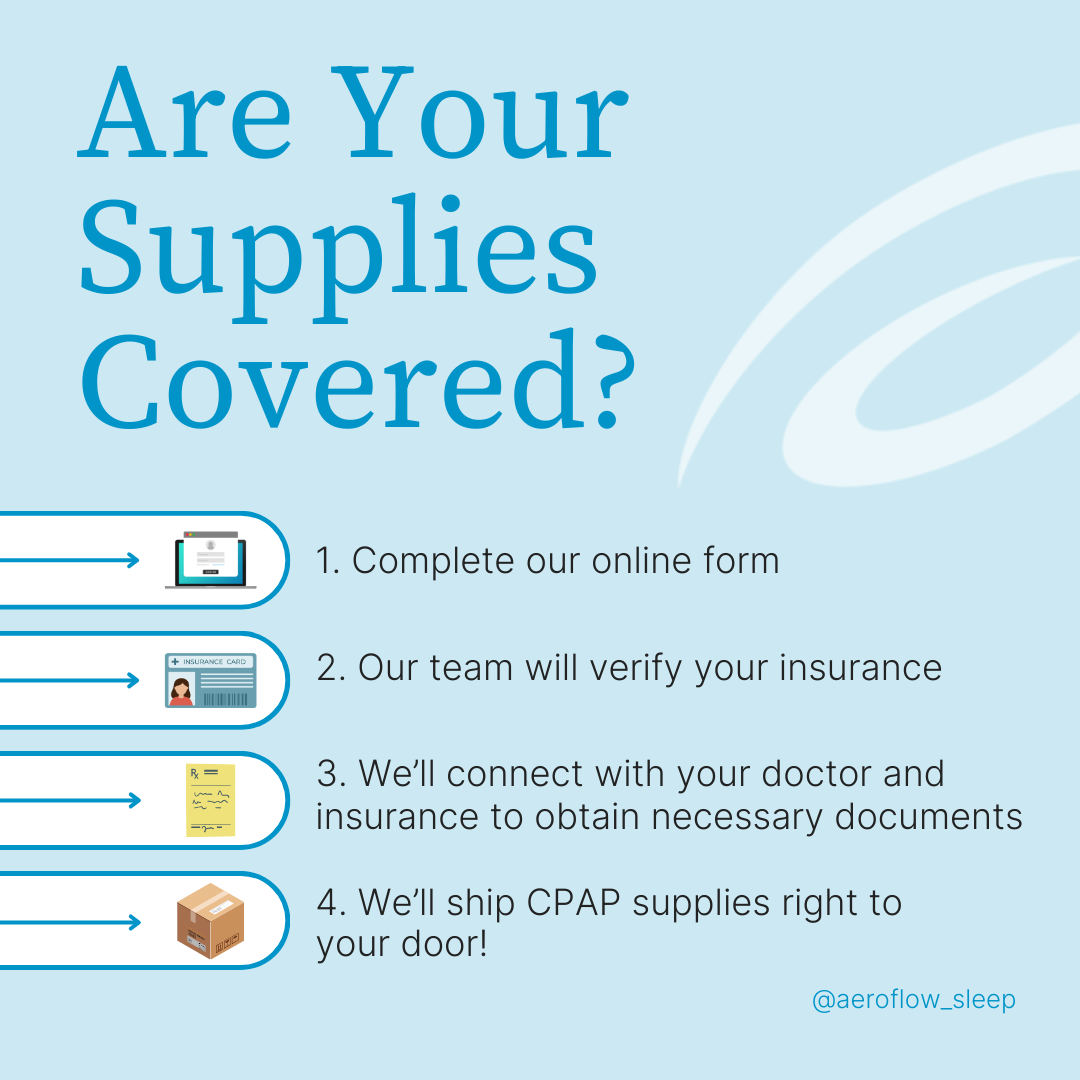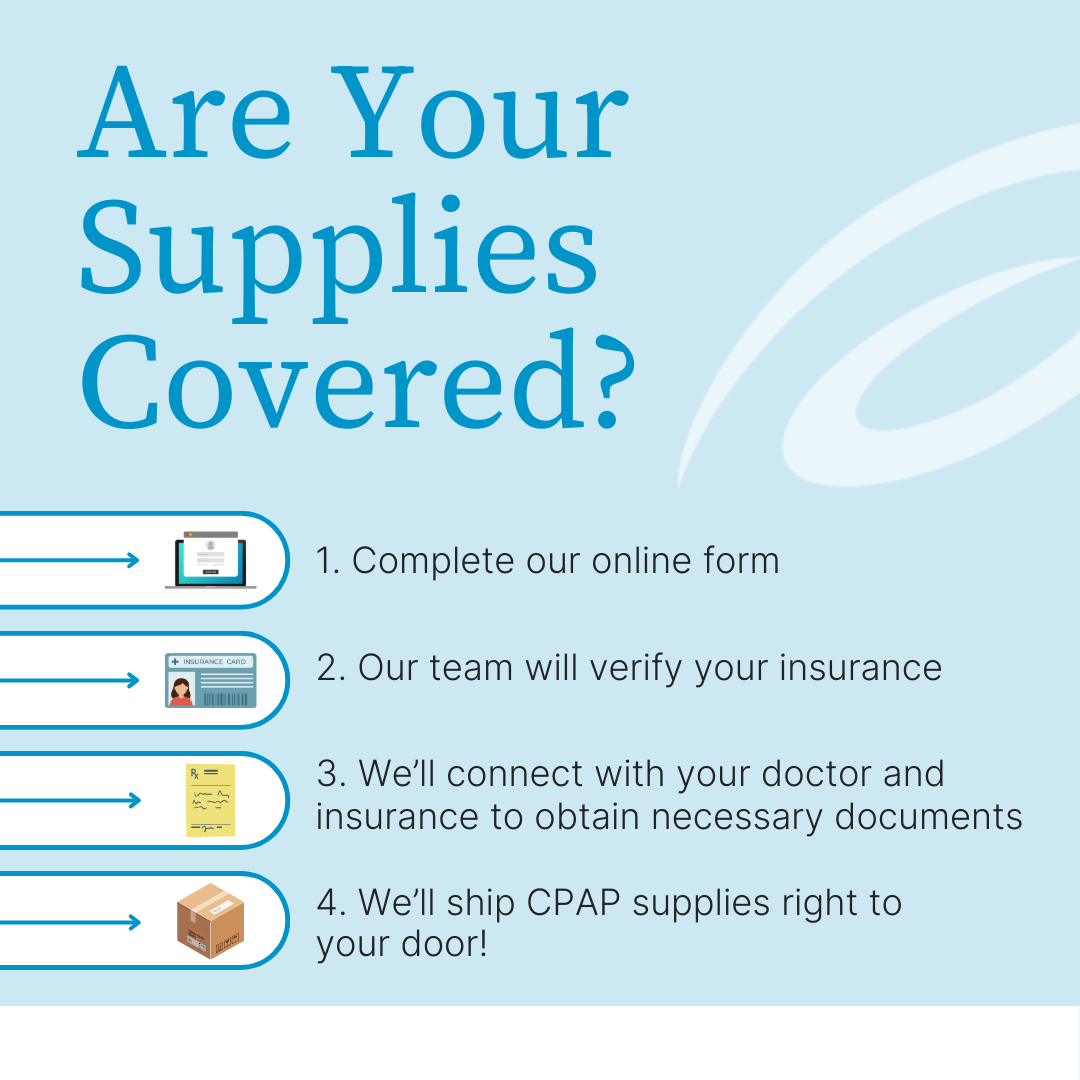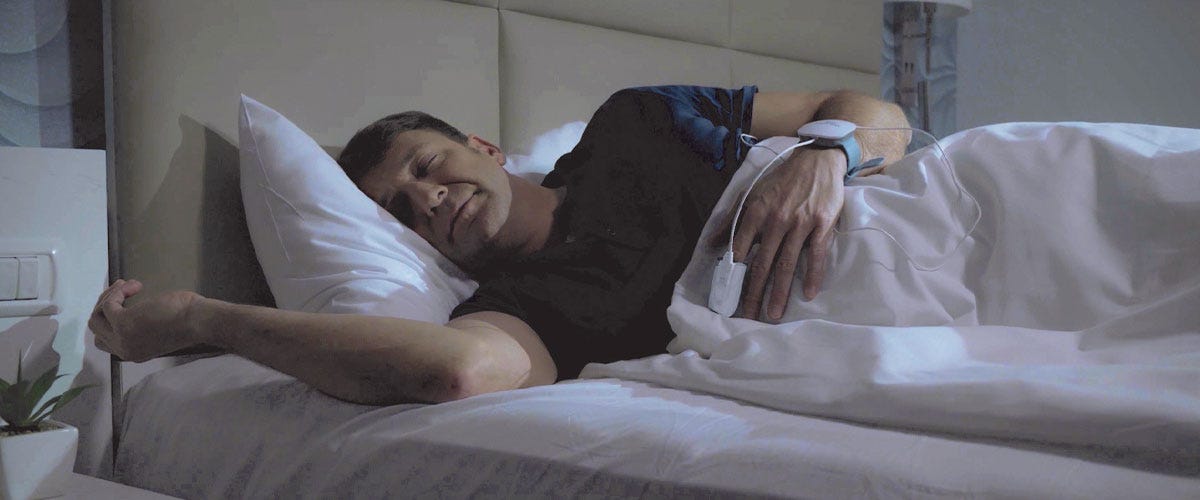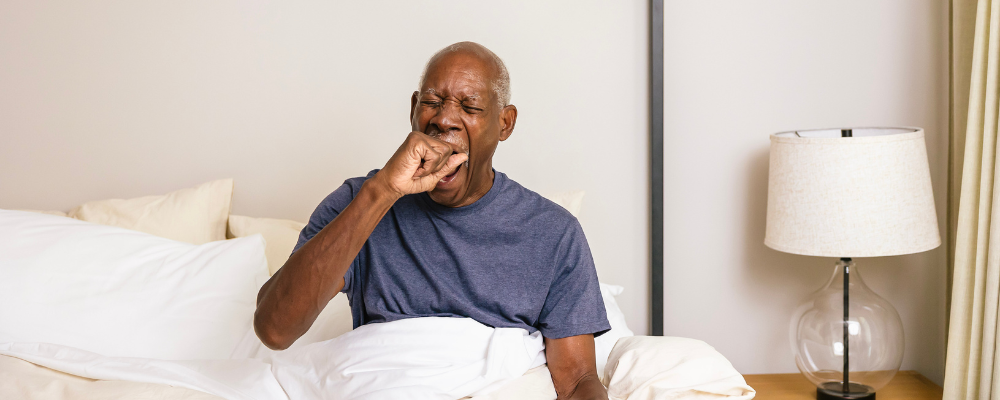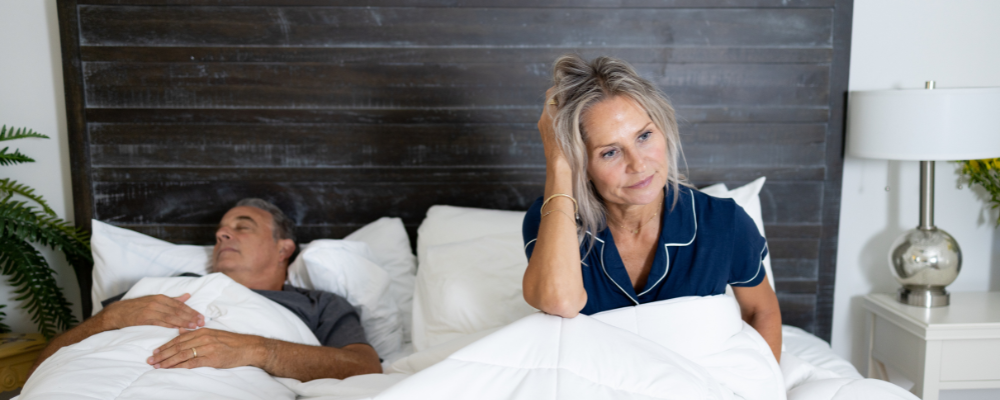For some, discomfort can lead Obstructive Sleep Apnea (OSA) patients to seek out alternative means of sleep medicine. For others, it’s a conscious effort to do one’s part in sourcing sustainable methods by DIY-ing treatment options. Whatever the reason, Aeroflow Sleep is here for you with lists of home remedies to try, the home remedies to avoid, and prevention techniques for all types of sleep apnea.
6 Home Remedies For Obstructive Sleep Apnea
Yes, there will always be some sort of blockage in or around your airway, but being diagnosed with an incurable sleep disorder like OSA doesn’t mean you can’t develop some positive habits to help. Here are 6 expert-backed ways to make dealing with your illness easier:
1. Honey
Who knew that sweet nectar we slather on our biscuits could also help sleep apnea?! Dr. May did. Dr. Monique May, Board-Certified Family Physician and a partner of Aeroflow Sleep, shares her medical advice:
“Honey may help soothe the throat and decrease swelling due to its anti-inflammatory benefits. This may help decrease snoring, a common sleep apnea symptom. Also, locally-made honey may help decrease allergy symptoms by using pollen from the area. This in turn may help sleep apnea by decreasing upper airway swelling and inflammation.”
2. Weight Loss
Obesity is a common comorbidity among sleep apnea patients. In fact, Dr. May calls obesity “a major risk factor,” because neck fat puts pressure on the throat muscles and ultimately restricts airflow. Therefore, maintaining the right body weight is a great way to keep your OSA from being exacerbated.
Talk to your doctor about what a healthy weight means for you, and then commit yourself to regular exercise and a balanced diet.
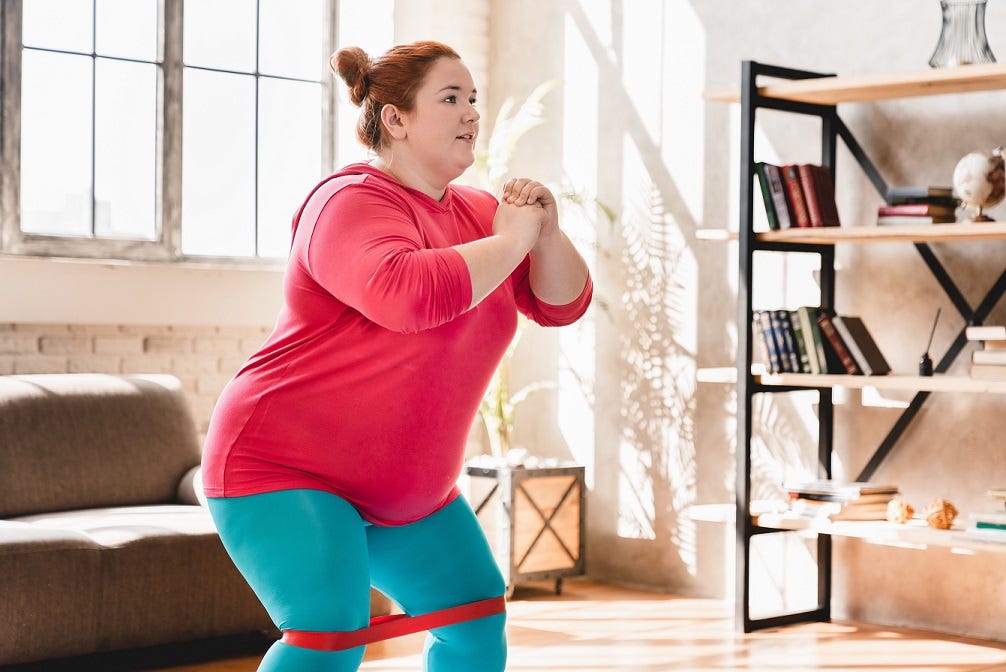

3. Sleeping Position
Which position you sleep in can also affect your airways. If you sleep on your stomach, you are also lying on your throat and putting pressure on your upper airway, and lying on your back can actually increase your AHI. Plus, one of the most prevalent symptoms of sleep apnea occurs on your back: snoring. The recommended sleeping position for sleep apnea patients is on your side. All you need to do to change positions is practice keeping your spine aligned.
4. Angled Pillow
How you keep your spine aligned is by investing in an angled pillow. Unlike regular pillows that lay flat or do not follow a set curve, angled pillows are designed to lay your head in such a way that prevents neck and back pain. This is also what you need for sleep apnea, because an angled pillow will promote better sleep with an open airway.
5. Lifestyle Changes
“The only way to ‘cure’ sleep apnea naturally is with significant lifestyle changes,” notes Dr. May. Generally, sleep apnea symptoms like daytime sleepiness and comorbidities like heart disease and excess weight can be treated thus.
For example, daytime sleepiness can be curbed with a cup of coffee. Patients with heart disease should avoid fatty foods. And excess weight can be shed with regular exercise. Perhaps talking to a nutritionist can help, in addition to your primary care doctor and Aeroflow Sleep Specialist.
6. Humidifier
Finally, you may seek comfort in a humid environment. The natural remedy would be to move to the tropics, but that’s not possible for most people and isn’t really a home remedy for YOUR home. Instead, you can use a humidifier wherever you live.
Humidifiers add moisture to the dry air being circulated throughout your home, if the climate in which you live is also dry. Using a humidifier helps prevent sore throats, nasal congestion, and mild medical conditions like respiratory illnesses and sinus infections—all of which can worsen sleep apnea.
However, Dr. May cautions, “Be sure to clean and thoroughly dry your humidifier often. Moisture can lead to mold and mildew which can cause respiratory problems for people who are sensitive to them.”
3 Home Remedies That DON'T Work
Of course, it’s just as important to know which home remedies may harm you as it is the ones that help you. Dr. May expands on 3 definite no-no’s for anyone with sleep apnea symptoms:
1. Drinking Alcohol
Remember how we said earlier that there will always be some blockage in your airway if you have OSA? Drinking alcohol creates its own.
“Drinking alcohol makes sleep apnea worse by causing the muscles in your throat to relax,” says Dr. May. “This causes an obstruction that makes getting enough air difficult and can result in pauses in breathing.”
Doubling your chances of an apneaic event (paused breathing) is obviously not beneficial, so alcohol consumption is not a wise choice.
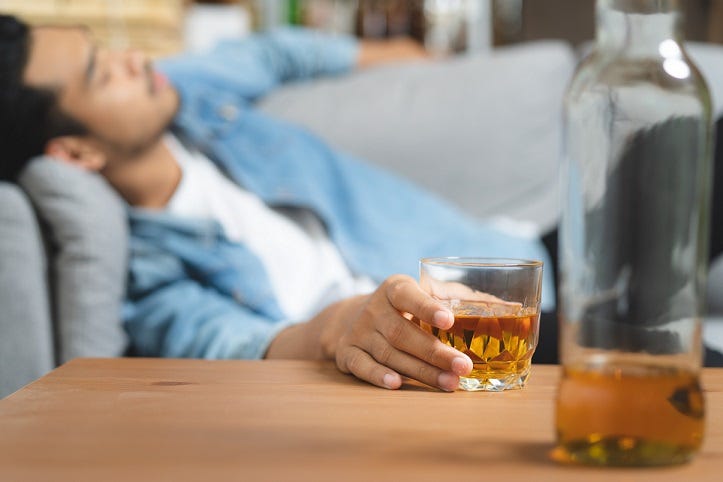

2. Smoking Marijuana or Taking CBD
Smoking marajuana or taking CBD is already a controversial home remedy, and sleep experts currently believe that it’s also an impediment to OSA patients’ health. Dr. May weighs in, “According to the American Academy of Sleep Medicine, marijuana ‘should not be used as a therapy for sleep apnea’. As for CBD, it is not recommended either, due to the lack of evidence of its effectiveness and safety.
“Also, these products are not regulated by the FDA, and their composition varies widely amongst products. More studies are needed to determine whether this is an effective and safe treatment for sleep apnea.”
3. Natural Remedies and Sleep Supplements
Finally, taking natural remedies or a sleep supplement like melatonin can improve sleep quality; however, its use is very much dependent on quality over quantity. Too much of a good thing can hurt you. Dr. May explains, “Excess amounts of melatonin may cause the muscles of the throat and upper airway to relax too much, worsening the obstruction seen with sleep apnea.”
She also warns, “The other possible concern with melatonin is the potential for its interaction with several medications that are commonly used by people with sleep apnea. Drug interactions are possible with blood thinners, as well as medications for diabetes, high blood pressure, and certain psychiatric conditions. People taking these types of medicines should ask their physician or pharmacist before starting any type of supplement or over-the-counter medicines.”
Can I Cure Myself Of Obstructive Sleep Apnea?
Now that we know which home remedies can help and hurt OSA, the real question becomes...can any of these cure it? Losing weight, reducing high blood pressure, and being mindful of your sleep apnea causes are great ways to improve your OSA, but sleep apnea does not go away. Sleep apnea treatments are the only ways to ensure your health and wellness.
3 Sleep Apnea Treatments Without CPAP
It’s true that CPAP, or continuous positive airway pressure, is an intimidating concept. Luckily, there are ways to treat sleep apnea without using CPAP, and Dr. May has 3 to share:
1. Oral Appliances
“Oral appliances can be custom-made by a dentist, and they help to keep the airway open,” states Dr. May. Tongue retaining splints and mandibular advancement devices can be used for OSA patients—provided they address the right cause; the dentist who prescribes them will know which is appropriate for you.
2. Positional Aids
Unlike angled pillows, Dr. May says, “Positional aids, such as sleep wedges and tennis balls, can be used to keep someone from rolling onto his or her back during sleep.” Just another example of a tool that can help change your sleeping position from a back to side sleeper.
3. Implants
If you’re willing to brave the risk factors of invasive surgery, “there is also an implantable hypoglossal nerve stimulator called Inspire,” offers Dr. May. “It sends a gentle signal to the hypoglossal nerve to move the tongue out of the way and relieve the upper airway blockage.”
We’d personally reconsider CPAP before undergoing surgery, and don’t worry; Aeroflow Sleep is here to hold your hand.
Treat Sleep Apnea With Aeroflow Sleep
Those of you who suspect you have sleep apnea but remain undiagnosed should first ask your doctor about a sleep study. This can be done in a lab, or there are now ways to perform a home sleep test from the comfort of your own bed. Regardless, a sleep study will both determine which type of sleep apnea you have (obstructive or central sleep apnea) and if your condition ranges from mild sleep apnea to severe sleep apnea per the Apnea-Hypopnea Index (how often you stop breathing.)
Once you have all of the information above, it’s time to treat sleep apnea with Aeroflow Sleep. We work with your doctor and insurance provider to get your CPAP supplies covered up to 100% through insurance. To check your eligibility fill out our qualification form and then you’ll be well on your way to achieving the best sleep cycle you’ve had in years.


